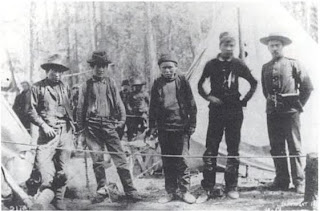
Probably one of the most famous women of Skagway, red-haired Irish descent Mollie was a waitress and church helper, coming here with Rev. Dickey in the goldrush. She was a kind person and everyone loved her, so why did her husband murder her on October 28, 1902 on a street in Seattle? Mike Bartlett claimed it was a “crime of passion” but later committed suicide leaving their son Leo an orphan.
Packer Jack Newman, long an admirer of Mollie, had a statue made of her in 1930 and sent it to Skagway where it sits today on 6th Street in front of a children’s park. An inscription written by Packer Jack goes: “…Her spirit fingers still reach across the years and play on the slackened strings of my old heart, and my heart still sings,—MOLLIE!—my heart still sings but in such sad undertone that none but God and I can hear.”
March 2022 update
I was contacted recently by Art Petersen who has spent years researching Mollie Walsh and Packer Jack Newman. In fact he has written a new book entitled
Promised Lands, MOLLIE WALSH: An Irish-American Story (2021 Klondike Research). available from Klondikeresearch.com
In this book he describes new corrections which I will now point out:
A few facts:
Packer Jack never shot anyone.
The statue was erected after Packer Jack died.
Packer Jack wanted to be buried at Inspiration Point on the White Pass Trail.
Leo Alphonse was born on August 27, 1900, not 27 May 1899. He forged his birthdate to be old enough to join the U.S. Army.
Mike Bartlett did not put on a party to celebrate the birth of his son; he was not even on the boat.
Mollie did not help Reverend Dickey establish the Union Church in Skagway.
Mollie’s husband never entered an insane asylum; rather, he suffered torturously for six years after his trial before ending his own life before a horrified audience.






